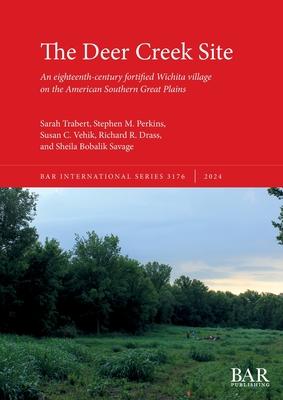The Deer Creek site (34KA3), located next to the Arkansas River in the Southern Plains of the U.S., served as a crucial hub for exchange and interaction during the eighteenth century between ancestral Wichita peoples and French traders from Louisiana. Despite its significance as one of the few Indigenous trading villages in the region to have a historically reported fortification complex, previous owners denied researchers access to the site. In 2016, an agreement was reached with the current site managers and the Wichita and Affiliated tribes so that the professional excavations could be carried out. This monograph presents the findings of recent research conducted at the site, employing a combination of remote sensing and archaeological methods. Unlike the northern Plains where entire villages were fortified, southern Plains villages contained fortified refuges within their settlements. These fortifications and their associated features are examined in depth, along with DNA analysis of horse and dog remains, European guns and other trade goods, and analyses of ancestral Wichita material culture.

The Deer Creek Site: An eighteenth-century fortified Wichita village on the American Southern Great Plains
The Deer Creek site (34KA3), located next to the Arkansas River in the Southern Plains of the U.S., served as a crucial hub for exchange and interaction during the eighteenth century between ancestral Wichita peoples and French traders from Louisiana. Despite its significance as one of the few Indigenous trading villages in the region to have a historically reported fortification complex, previous owners denied researchers access to the site. In 2016, an agreement was reached with the current site managers and the Wichita and Affiliated tribes so that the professional excavations could be carried out. This monograph presents the findings of recent research conducted at the site, employing a combination of remote sensing and archaeological methods. Unlike the northern Plains where entire villages were fortified, southern Plains villages contained fortified refuges within their settlements. These fortifications and their associated features are examined in depth, along with DNA analysis of horse and dog remains, European guns and other trade goods, and analyses of ancestral Wichita material culture.